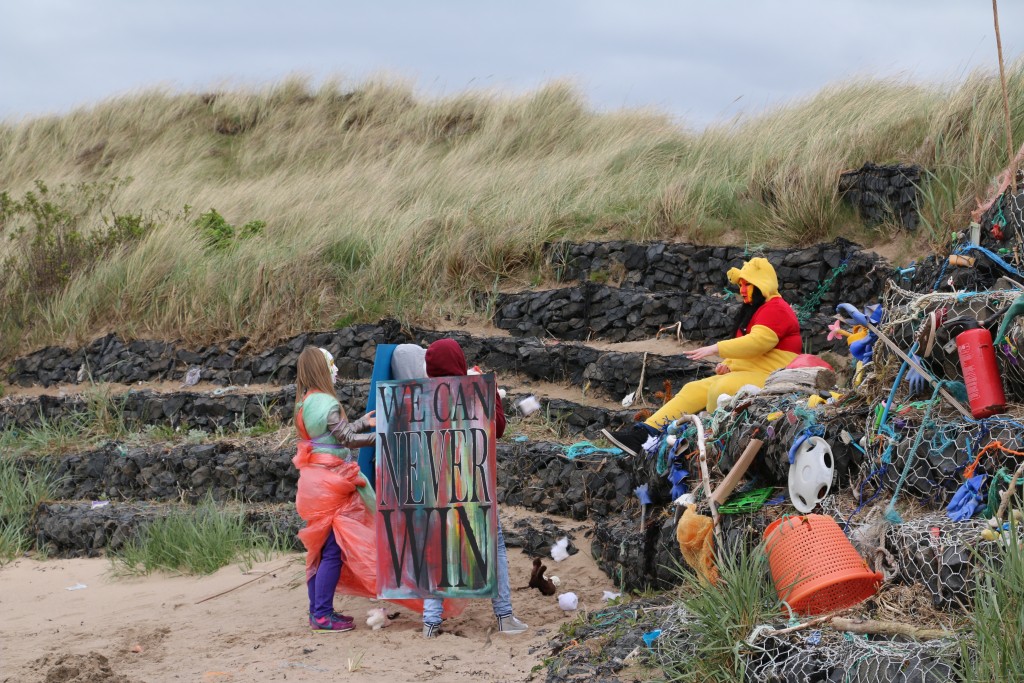The Creative Lives project celebrates the learning and participation activity delivered by cultural organisations in Edinburgh. Initiated by City of Edinburgh Council (CEC) and Culture Republic, the aim is to create an overview of the learning and participation activity being delivered, and to create a professional network to share best practice and support the continued development of the sector.
At the latest group meeting, participants came together to share practice focusing on activity which is community (rather than school) centred. The examples highlighted some of the inspirational partnership work taking place across the city today:
Cerin Richardson, Head of Creativity and Diversity at Festival and King’s Theatre Edinburgh, talked about plans to make both venues dementia friendly, from specialist programming through to a review of environment, infrastructure and training for front of house and other customer services.
Funded by the Life Changes Trust, the project will work in partnership with organisations including the Dementia Research Centre in Stirling, who will audit both venues and provide guidance on how to make them more accessible; Alzheimer’s Scotland, CEC Social Care, Hearts and Minds and NHS services. Scottish Ballet are bringing an adapted version of Cinderella to Edinburgh Festival Theatre on 18 December. As part of the project a bespoke dementia friendly production will be created for 2017.
Kate Wimpress, Director of North Edinburgh Arts (NEA) discussed the creation and development of their garden which has led to greater community engagement with the main Arts Centre programme. Through arresting and engaging activities to raise awareness in the nearby area, such as putting turf down in the supermarket, and visual preference surveys to find out what resonated with the community, NEA made sure that local people were involved with the project from the start. NEA also commissioned artists to work with Muirhouse residents and community groups to produce inspiring arts events in nearby unoccupied spaces using creativity to challenge perceptions and stereotypes, within and beyond the area.
Anna Downie, Community Engagement Officer at the National Museums Scotland (NMS), and Fiona O’Sullivan, Arts Programme Manager at the Sick Kids Friends Foundation, spoke about their collaboration, which aims to bring the museum experience to the Royal Hospital for Sick Children. The project began with skill swap sessions between museum staff and play specialists at the hospital. NMS then developed a learning resource based around the museum’s Mammoths of the Ice Age exhibition. The resource was made up of books, craft activities, toys and objects from the exhibition, including a real mammoth’s tooth.
Partnership was fundamental to this project. The museum team provided a cultural experience that the hospital couldn’t offer and gave training in how to use the resource to best engage with patients and their families. The hospital staff were equally crucial in helping the museum team think about factors that don’t apply in other settings, such as infection control. This pilot scheme has been very successful and the next step will be to create additional resources and programmes based around the museum’s permanent collections.
Laura McBride, Creative Learning Worker at Screen Education Edinburgh (SEE), gave feedback on a recent collaboration with the Bridges Project that offered young people in Musselburgh the chance to take part in a two week-long filmmaking course. SEE engage with 10-25 year olds, specifically those who have significant barriers to participation and live in areas in the top 15% SIMD areas.
SEE has identified issues that impact upon the successful delivery of the project and has changed its approach in response to these challenges. For example, literacy skills are low amongst participants so the project has been redesigned to account for this using storytelling as an approach rather than script writing. Continuing engagement is also a challenge and SEE tries to allow the young people to get their hands on cameras as soon as possible to keep them enthusiastic. With every stage of film-making SEE encourages student involvement by allowing them to take ownership of the project and shape the work.
Robin Baillie, Senior Outreach Officer at National Galleries Scotland (NGS), talked about the UNTITLED project. This initiative includes three regional projects where young people create original artwork and films over a period of nearly two years. Their creative outputs have already been exhibited locally, and will be part of an exhibition at the Scottish National Portrait Gallery in January next year.

NGS worked with Social Work and Youth Services departments to support and sustain the participation of the young people involved. The aim was to give autonomy to participants in determining the course of the projects they were engaged in, reconciling their areas of interest with the project objectives set by NGS.
Catherine Campbell, Education Officer at Edinburgh International Book Festival, introduced Booked!, which extends the activity of the Book Festival beyond Charlotte Square Gardens, giving more people across Scotland access to live literature events and projects thanks to funding from The People’s Postcode Lottery.
Project activity so far includes the ‘Alice in Ayrshire’ scheme. This joint initiative with Boswell Book Festival celebrated 150 years since the publication of Lewis Carroll’s Alice’s Adventures in Wonderland. Pupils from three primary schools in Ayrshire collaborated with illustrator Nick Sharratt to create a giant frieze depicting their version of the classic story. Author Vivian French also worked with older pupils as they reported on the story for the ‘Wonderland Times’. More information on Alice in Ayrshire and other Booked! activities are available on the Edinburgh International Book Festival website.
Main image credit: Calton Hill, Edinburgh by Raphael Chekroun (CC BY-ND 2.0)